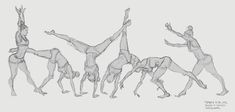How to Analyze Newspaper Language

Understanding the language used in newspapers is an essential skill for anyone interested in media literacy, journalism, or simply staying informed on current events. Newspaper language often employs particular terminology, structures, and formats to convey information clearly and concisely. In this article, we will discuss how to effectively analyze newspaper language and develop a deeper understanding of the nuances present in news articles.
1. Identifying Headlines
The first thing you’ll notice when reading a newspaper is the headline. Headlines serve as attention grabbers and provide readers with an idea of what the article is about. To analyze a headline, consider its length, word choice, and tone. A good headline should accurately convey the main point of the article while drawing readers in.
2. Understanding News Structure
The structure of news articles follows a pattern known as the inverted pyramid. This means that the story starts with the most important information, then proceeds to less important details, and finally background information or supporting material.
To analyze newspaper language effectively, it’s important to understand where key information will appear within this structure:
– The lead: This is usually found in the first paragraph, where the journalist establishes the main points of interest.
– The body: Here, additional information is revealed to support and elaborate on the main point.
– The conclusion: This typically summarizes any remaining points and wraps up the story.
3. Recognizing News Values
News values are criteria that journalists use to determine which stories are newsworthy and how much prominence they should be given. When analyzing how newspaper language reflects news values, consider factors like timeliness, proximity, impact, prominence of people involved or novelty. These elements can help you understand why an article was written and what makes it significant.
4. Unpacking Tone and Style
Newspapers have varying degrees of formality, depending on their target audience and editorial stance. When analyzing newspaper language, pay close attention to the tone and style of writing. Look for any bias or subjectivity in how a story is presented and consider the choice of vocabulary, sentence structure, and use of quotes.
5. Analyzing Grammar and Punctuation
Grammar and punctuation are crucial components of newspaper language as they shape the overall readability of an article. Consider sentence lengths, use of commas or semicolons, and proper use of abbreviations when evaluating grammar and punctuation in a news article.
6. Decoding Visual Elements
Newspaper language encompasses more than just words; visual elements like photographs, diagrams, and infographics are all integral parts of news stories. These elements help readers better understand the story’s context and main points. Be sure to evaluate how visual elements support or contradict the written content to gain a full understanding of the story.
In conclusion, analyzing newspaper language requires a keen eye for details such as headline style, structural cues, news values, tone, grammar, punctuation, and visual elements. By familiarizing yourself with these aspects of news articles, you’ll be better equipped to understand complex stories and differentiate between reliable sources and potentially biased reporting.






